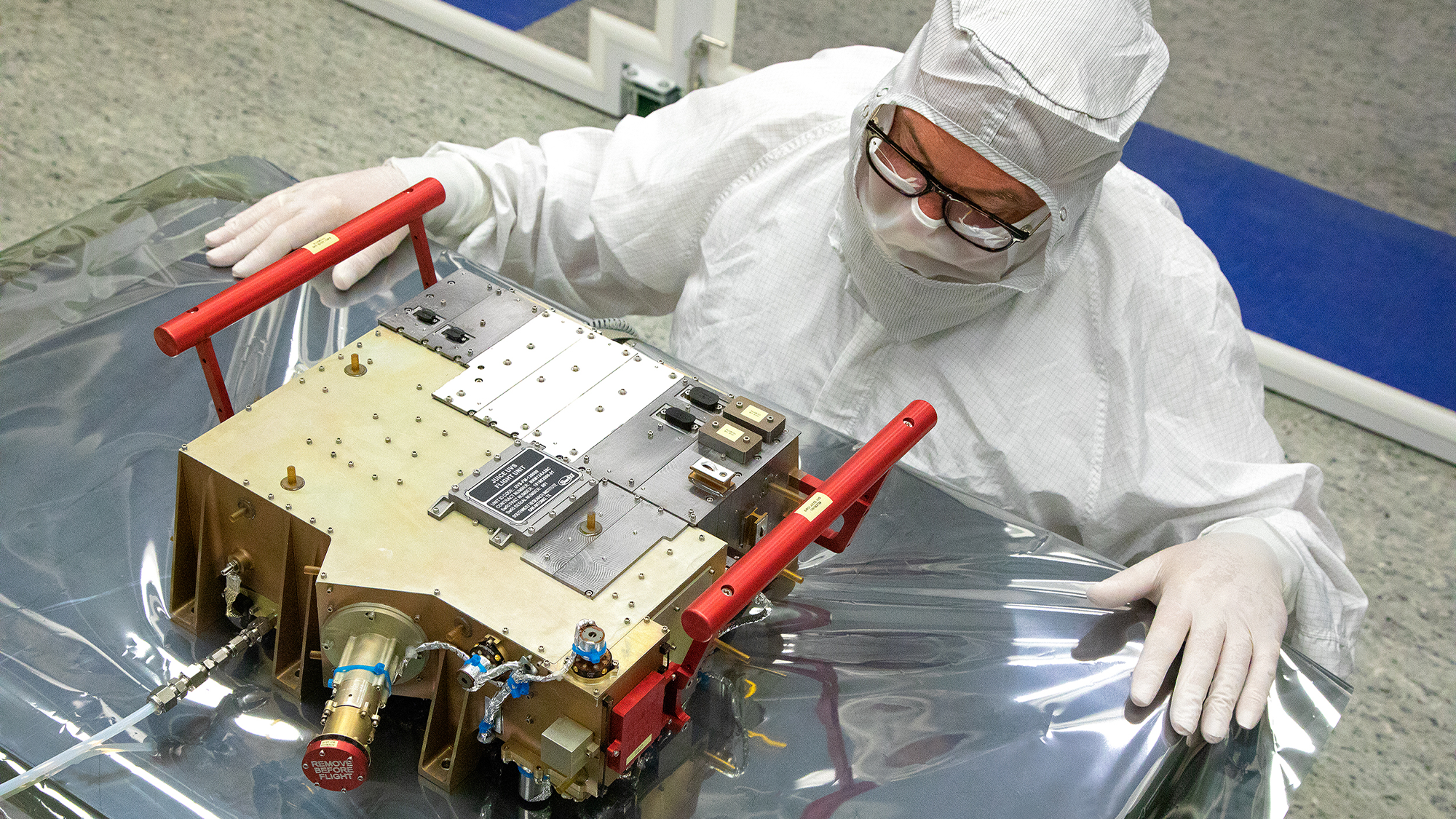

It’s been almost two months since the European Space Agency’s JUpiter ICy Moons Explorer (JUICE) launched and the spacecraft has successfully collected its first ultraviolet data. The spacecraft’s Ultraviolet Spectrograph (UVS) instrument is one of three projects that make up NASA’s contribution to the space mission to focus on our solar system’s largest planet and its moons. The spacecraft will explore potentially habitable worlds located around the gas giant and investigate Jupiter as an archetype for gas giants in our solar system and beyond.
[Related: Follow the JUICE mission as it launches to Jupiter and its many mysterious moons.]
As JUICE begins its eight year, 4.1-billion-mile roundabout journey to the Jovian system, the spacecraft is deploying and activating multiple antennas, booms, sensors, and instruments. The UVS instrument is the latest to succeed in this critical task.
The UVS was developed by the Southwest Research Institute (SwRI) in San Antonio, Texas.
A bit smaller than a microwave, UVS weighs just over 40 pounds and draws 7.5 watts of power. It is designed to determine the relative concentrations of various elements and molecules in the atmospheres of Jupiter’s moons once it reaches the Jovian system.
“Our team of SwRI scientists traveled to Darmstadt, Germany, to put JUICE-UVS through its paces,” JUICE-UVS principal investigator Randy Gladstone said in a statement. “On June 20, we opened the UVS aperture door to collect UV light from space for the first time. Soon after, we observed a swath of the sky to verify the instrument was performing well.”
A segment of this data was imaged by the team just as the UVS scanned a swath of the Milky Way.

UVS is the fifth instrument in a series of spectrographs developed by SwRI for other spacecraft, including ESA’s Rosetta comet orbiter and NASA’s Pluto-bound New Horizons. It will get close-up views of three of Jupiter’s Galilean moons–Europa, Ganymede, and Callisto.
These celestial bodies are all thought to have liquid water beneath their icy surfaces. It will record the ultraviolet light that is emitted, transmitted, and reflected by these bodies, which could reveal the composition of their surfaces and their atmosphere, as well as how both interact with the planet and its enormous magnetosphere.
[Related: This hot Jupiter exoplanet unexpectedly hangs out with a super-Earth.]
In 2024, a similar instrument called Europa-UVS will launch aboard NASA’s Europa Clipper. This spacecraft is scheduled to take a more direct route to arrive at the Jovian system roughly 15 months before JUICE, and will focus on studying Europa’s habitability. Europa is the smallest of Jupiter’s Galilean moons and one of at least 90 known moons orbiting the gas giant.
“Having two UVS instruments making measurements in the Jupiter system at roughly the same time will offer exciting complementary science possibilities,” principal investigator of Europa-UVS and deputy PI for JUICE-UVS Kurt Retherford said in a statement.
The JUICE missions will be the first close-ups of Jupiter’s moons since NASA’s Galileo probe visited the gas giant from 1995 and 2003 and the spacecraft and science instruments were constructed by teams from 15 European countries, Japan, and the United States.
